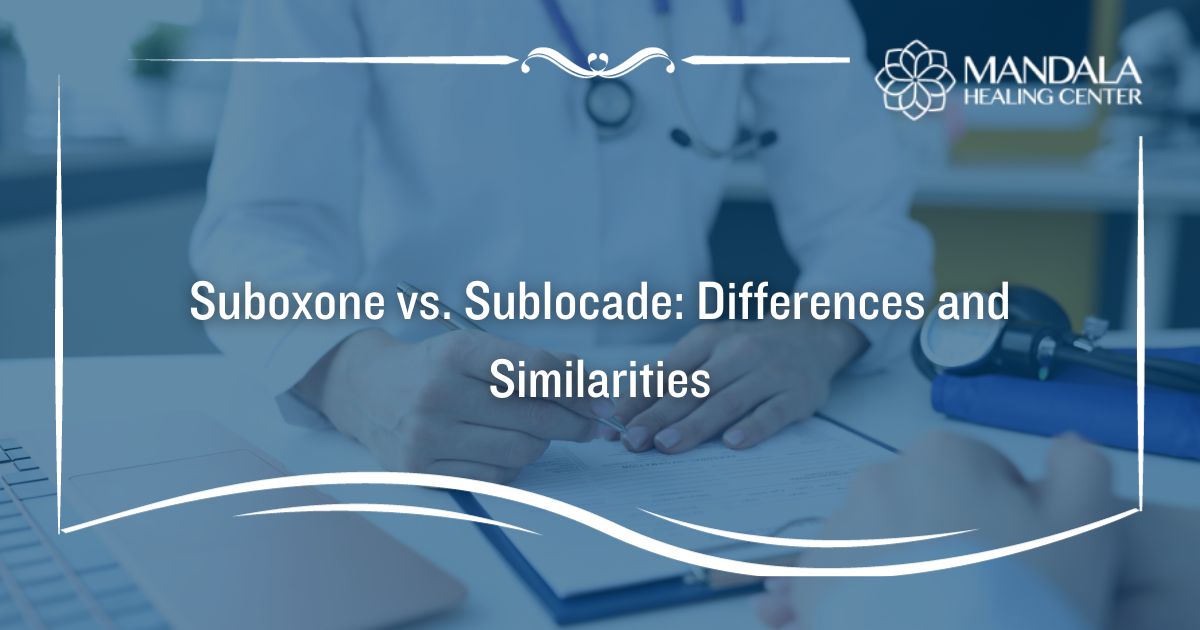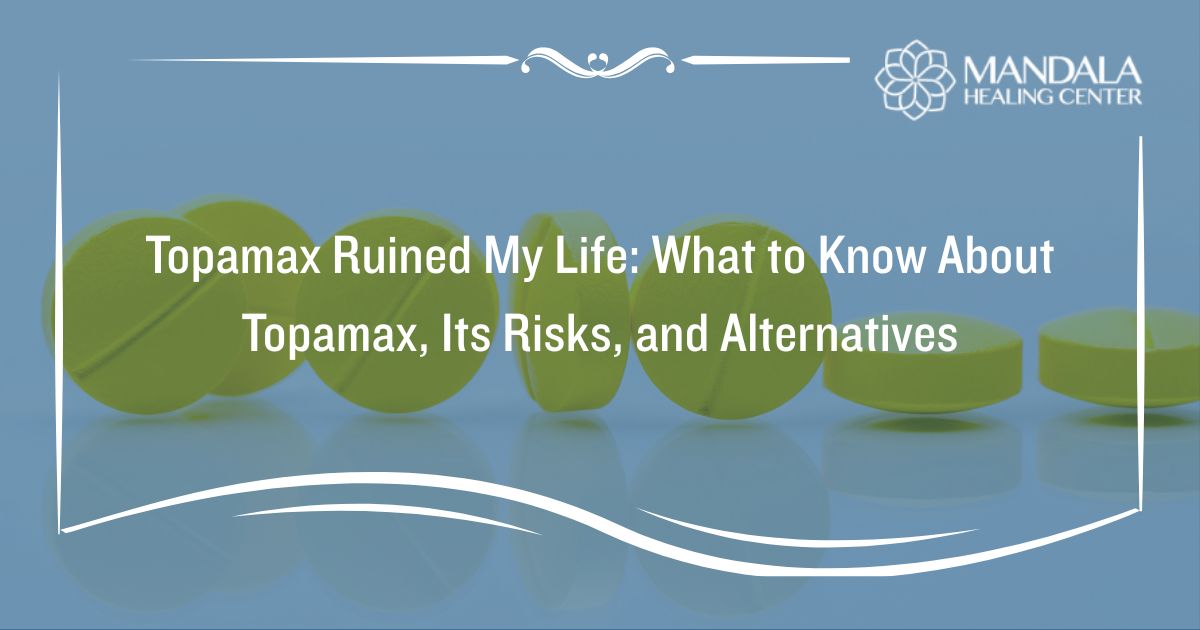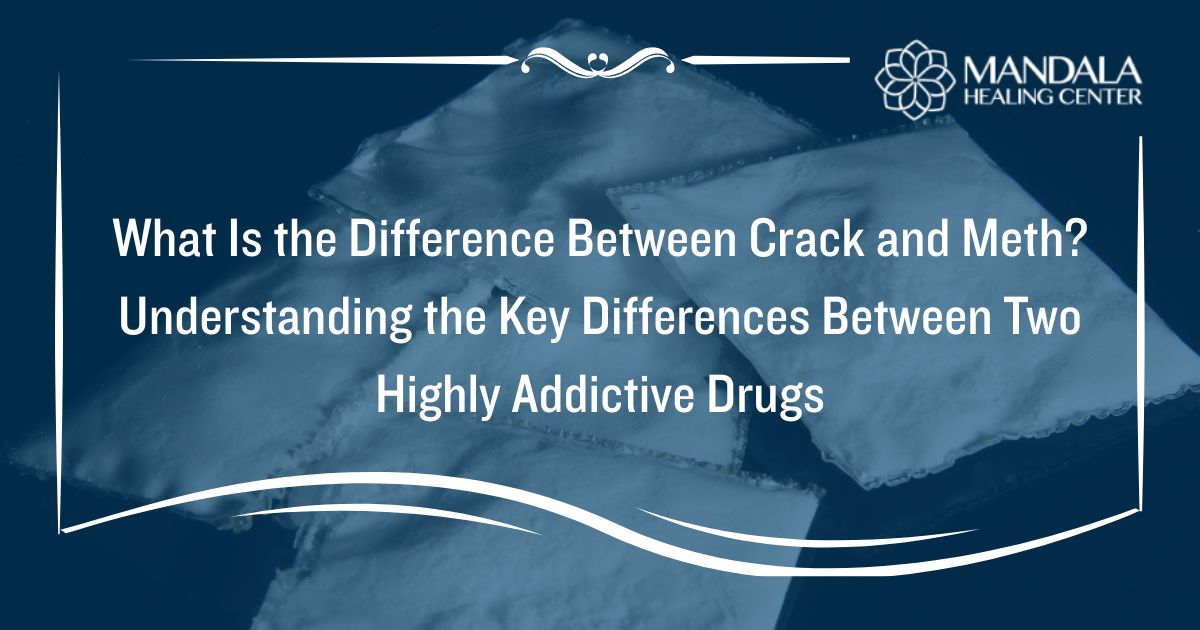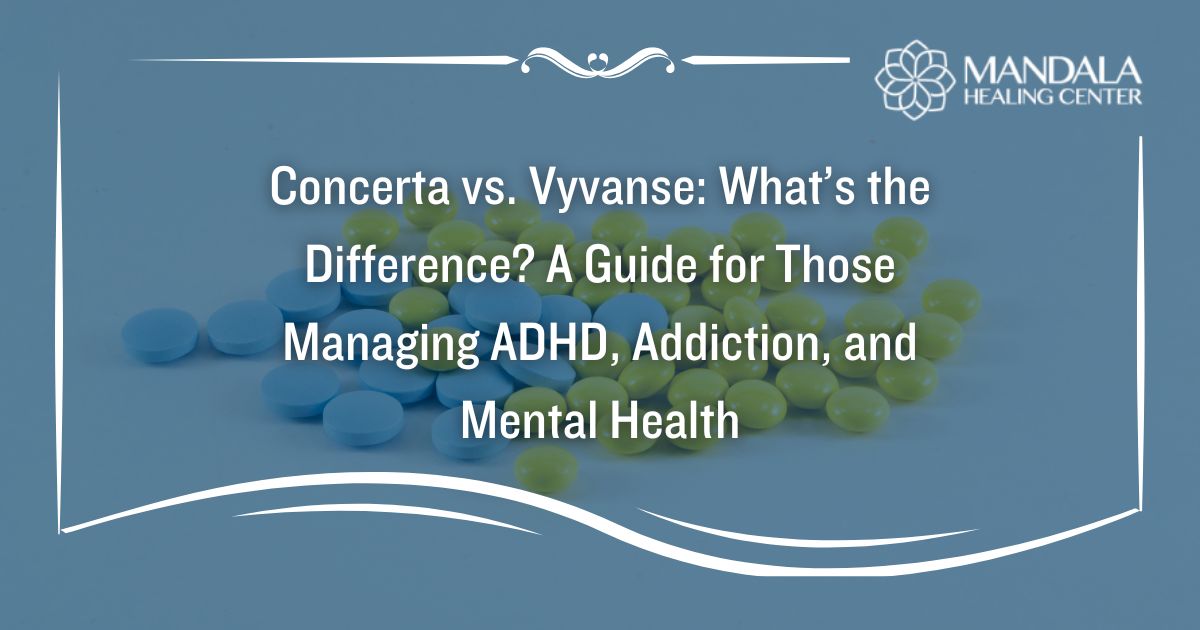If you live with opioid use disorder, getting professional treatment to stop using these potent drugs is critical. During treatment, your medical practitioner may advise that you take medications during detox and beyond to reduce the severity of your cravings and lower the risk for relapse.
Two drugs commonly used in treatment for opioid use disorder are Suboxone and Sublocade. These prescription drugs can help people have better outcomes during opioid use disorder treatment. Understanding how these drugs are alike and their differences is essential so you can make the best choices about your treatment and care.
This article will explore the differences and similarities between Suboxone and Sublocade. Reach out to the Mandala Healing Center specialists if you have questions about these medications or want to explore your holistic substance abuse treatment options.
What is Suboxone?
Suboxone is a prescription narcotic medication that contains a combination of naloxone and buprenorphine. Naloxone blocks the effects of opioids that many users find pleasurable and can contribute to abuse and addiction. Buprenorphine is a partial opioid agonist that can alleviate symptoms of opioid withdrawal and reduce the intensity of cravings. Suboxone is not a pain medication and is only used to treat opiate addiction.
Suboxone is available in a buccal film, a sublingual film, and a sublingual tablet. It must be taken on a daily basis.
What is Sublocade?
Sublocade is a prescription medication used to treat opioid dependence. It contains buprenorphine, which prevents opioid withdrawal symptoms.
Sublocade is available only to people enrolled in a program who understand the benefits and risks of this medication.
Sublocade is administered in an extended-release injection on a monthly basis and is intended for use by people who have received sublingual or buccal buprenorphine for at least one week. The Sublocade shot is administered subcutaneously, and the injection forms into a solid gel-like substance called a depot. The depot releases a steady dose of buprenorphine in the body throughout the month, eliminating the need for daily medication.
Suboxone vs. Sublocade: Understanding the Effects
Like all medications, Suboxone and Sublocade can cause side effects. Generally, the side effects of these medications are mild.
Suboxone side effects
The mild side effects of Suboxone include:
- Stomach pain
- Back pain
- Blurry vision
- Burning in the mouth and tongue
- Constipation
- Excessive sweating
- Dizziness
- Headache
- Irregular heartbeat
- Nausea and vomiting
- Redness or numbness in the mouth
- Difficulty with focus and concentration
- Fatigue
- Difficulty falling or staying asleep
Some people taking Suboxone will experience more severe side effects, including:
- Allergic reaction
- Liver problems, including hepatitis
You must talk to your doctor about what to expect when taking Suboxone and when to seek treatment for unwanted side effects.
Sublocade side effects
The most common side effects of Sublocade are injection site reactions, such as redness, itchiness, irritation, and pain at the injection site. These reactions are normal and typically subside as the size of the depot shrinks.
Sublocade’s mild side effects include:
- Constipation
- Lightheadedness or dizziness
- Headache
- Itching, redness, or pain at the injection site
- Nausea and vomiting
- Fatigue
Some people using Sublocade report serious side effects, including
- Allergic reaction
- Liver problems, including hepatitis
Your doctor will determine if you should use Sublocade and ensure you understand the risks and benefits of this medication.
The Similarities Between Suboxone and Sublocade
Sublocade and Suboxone are similar in some ways, including being used to treat opioid dependence. Both medications contain the active ingredient buprenorphine, which can reduce withdrawal symptoms and lessen the intensity of cravings, which can significantly reduce the risk of relapse. Lastly, both medications are most effective when combined with behavioral therapy and counseling–an approach known as medication-assisted treatment (MAT).
The Differences Between Suboxone and Sublocade
Suboxone and Sublocade are both used in opioid use disorder treatment, and both contain buprenorphine. However, there are several critical differences between these medications.
Here are some of the critical differences between Suboxone and Sublocade:
- Sublocade contains only buprenorphine, while Suboxone contains a combination of buprenorphine and naloxone. Naloxone can prevent people from an unintended opioid overdose.
- Suboxone is a sublingual film, meaning people use it by letting it dissolve under the tongue. Sublocade is a long-acting injection.
- People who use Suboxone must remember to take it every day, while people using Sublocade receive an injection once a month.
- Suboxone can be taken at home. A medical professional must administer Sublocade. Since Sublocade is only administered in a doctor’s office, it has a lower risk of abuse.
- Suboxone was approved for use in 2002, and Sublocade was approved in 2017.
- Doctors may prescribe Suboxone early in opioid use disorder treatment, typically 12-24 hours after the last dose of opioids. However, people are only eligible to receive Sublocade after being treated with Suboxone or buprenorphine for at least seven days.
Understanding the risks and benefits of your medications is essential. Talk to your medical provider about what to expect while taking Suboxone or Sublocade, and always follow your doctor’s instructions.
Suboxone vs. Sublocade: Which is Right For Me?
If you have opioid use disorder and want medically-supported treatment, you must consult with a doctor to determine which medications are right for you. Your doctor cannot prescribe Sublocade until you have been taking buprenorphine for at least one week and have tolerated it well.
Before beginning any detox program or taking medications to manage opioid withdrawal, you must consult with a medical professional who can evaluate your physical and mental health and assess your needs during treatment.
Learn More About Opioid Addiction Treatment With Suboxone and Sublocade Now
If you or someone you love lives with opioid use disorder and want to explore the benefits of Suboxone vs. Sublocade, reach out to the specialists at the Mandala Healing Center. Our dedicated team will answer your questions and help you find the treatment you need to live the healthy, sober life you deserve. Call now to learn about our programs or to schedule an intake assessment.












